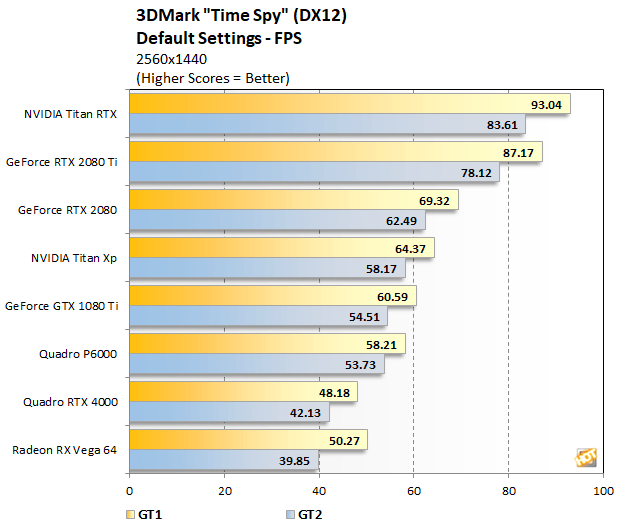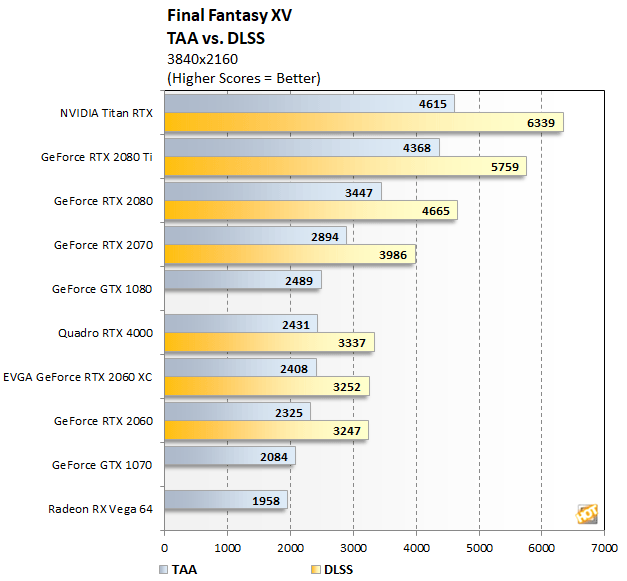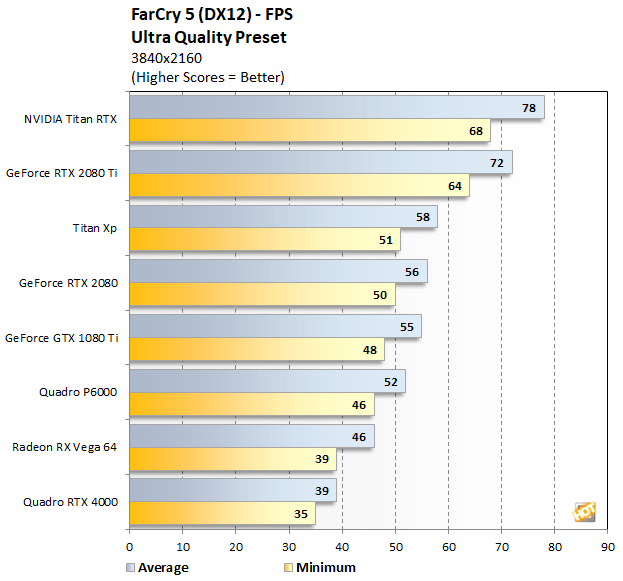NVIDIA Quadro RTX 4000 Review: Turing Powered Pro Graphics
Futuremark’s VRMark is designed to test a PC’s readiness for the HTC Vive and Oculus Rift virtual reality headsets. The benchmark does not, however, require that one of the headsets is attached to the PC to run and it uses an in-house graphics engine and content to ensure comparable results between different platforms. We ran the "Blue Room" VRMark test at defaults settings here, which is currently the most taxing test offered by the tool.
|


The Quadro RTX 4000 clearly outpaces the P5000 and Radeon Pro WX 8200 here. The Turing GPU architecture is optimized for VR workloads and it shows in this test.
Although the Quadro RTX 4000 is not meant to be gaming GPU, because it is based on Turing and that game developers may use the card for their work, we decided to see how it could handle some gaming-oriented tests, including a couple that leverage DXR and NVIDIA's RTX and DLSS technologies.


The Quadro RTX 4000 outpaces the Radeon RX Vega 64 in the DX12-based 3DMark Time Spy test, but obviously trailed the gaming graphics cards based on today's more powerful GPUs.





|
|
|
Before bringing this article to a close, we'd like to cover a couple of final data points -- namely, power consumption and noise. Throughout all of our benchmarking and testing, we monitored acoustics and tracked how much power our test system was consuming using a power meter. Our goal was to give you an idea of how much power each graphics configuration used while idling and also while under a heavy workload. Please keep in mind that we were testing total system power consumption at the outlet here, not the power being drawn by the graphics cards alone.

The relatively low power consumption of the Quadro RTX 4000 translates into a relatively quiet graphics card. While at the desktop or under light load, the Quadro RTX 4000 remains quiet and likely won't be audible over a typical CPU cooler or PSU, in a closed chassis. When under a sustained, heavy load, the card's fan does spin up significantly, however, we would still consider the card to be quiet. It is audible, but not obtrusive or loud in any way.






